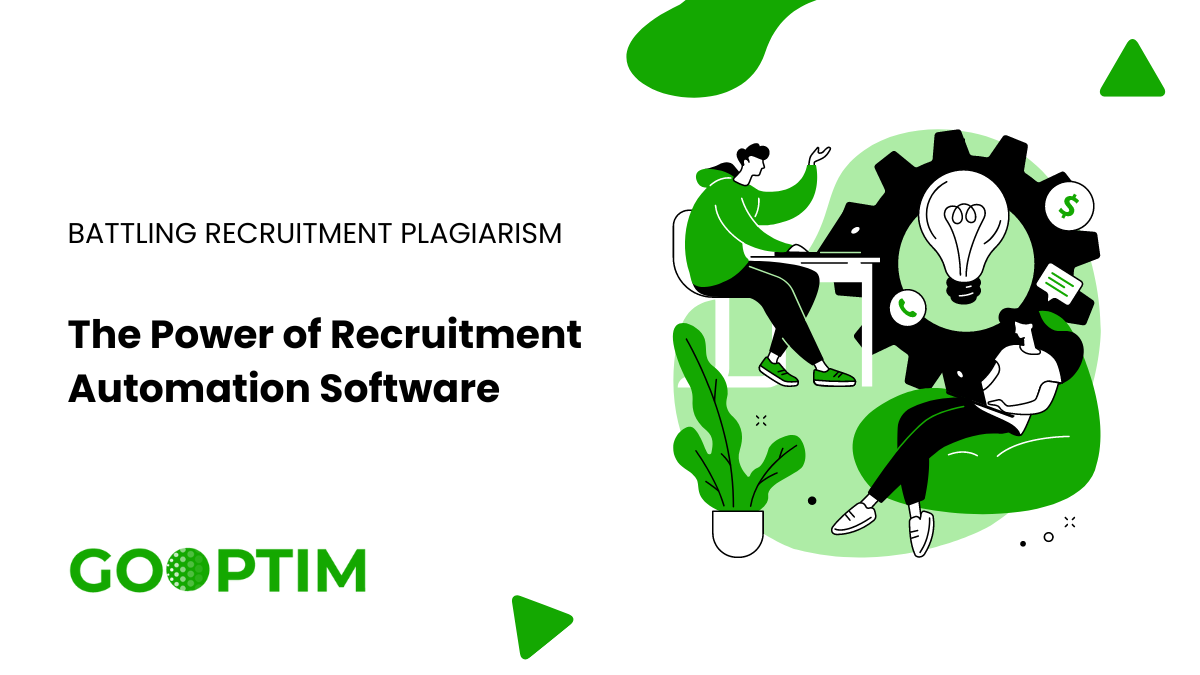
In today’s fast-paced and highly competitive job market, the task of finding top talent has become more challenging than ever before. Recruiters and HR professionals are constantly faced with the daunting task of sifting through countless resumes and applications, searching for that perfect candidate who possesses the right skills, experience, and cultural fit. But fear not, for there is a solution to this seemingly insurmountable challenge.
One area that has seen significant advancements is the recruitment process. Traditionally, this process has been time-consuming and resource-intensive, often leading to delays and inefficiencies. However, with the advent of automation software, organisations now have the opportunity to simplify and streamline their recruitment efforts like never before. Discover the prevailing challenge that has been haunting the recruitment industry: plagiarism, a detrimental practise that involves duplicating and inserting resumes or job descriptions with the intention to mislead employers.
Learning About Recruitment Plagiarism:
When resumes are reproduced without permission or proper acknowledgment, candidates may become victims of plagiarism. Organisations experience problems when recruiting applicants with fake qualifications, which results in subpar hires and ensuing financial losses.
Recruitment plagiarism’s effects include:
- Misrepresentation: Plagiarised resumes and cover letters frequently provide the wrong impression of the candidates’ real abilities, accomplishments, and experiences, which causes their credentials to be incorrectly assessed.
- Unqualified Hires: Recruiters run the risk of selecting individuals who are underqualified for the position when they base their judgements on copied material. This results in subpar work performance and higher attrition rates.
- Legal Problems: Plagiarism can result in legal issues, particularly if the content that was copied belonged to another person or business. The company’s reputation might be damaged, and it could cost the company money in legal fees.
- Damage to Company Culture: Employing people with phoney qualifications can have a detrimental effect on the company culture since underqualified workers find it difficult to perform their duties and cause problems in the workplace environment.
Preventing Recruitment Plagiarism with Automation Software:
- Recruitment automation software has emerged as a powerful solution to combat plagiarism and streamline the entire hiring process. Let’s delve into the various ways this technology helps prevent recruitment plagiarism:1. Resume Parsing and Matching
- Recruitment automation algorithms detect resume plagiarism. It analyses the content of a massive database of resumes to discover matches or duplicates, ensuring that only original resumes are processed.
- Plagiarism Detection:
2.These software solutions check application materials for plagiarism. The software warns recruiters about plagiarism by comparing resumes to public information and other job applications.
- Skill Assessment:
3.Rather than just depending on resumes, recruiters might use automated talent evaluation tools to evaluate prospects. This enables a fair and unbiased review, removing the motivation for candidates to plagiarise to boost their qualifications.
- Customizable Application Processes:
4.Recruitment automation software lets firms develop individual application procedures that demand unique candidate answers. This customization discourages generic or plagiarised replies by requiring applicants to answer personally.
Recruitment plagiarism harms job seekers and companies. Thankfully, recruitment automation software protects companies against plagiarism. Using resume parsing, plagiarism detection, competence assessment, and AI-powered interviews, recruiters can ensure fair assessments and hiring choices. Recruitment automation software prevents plagiarism and improves the recruiting process, resulting in better hiring and a stronger team.
Read More: The Job Seeker’s Dream: What if All Job Boards Were in one place?






